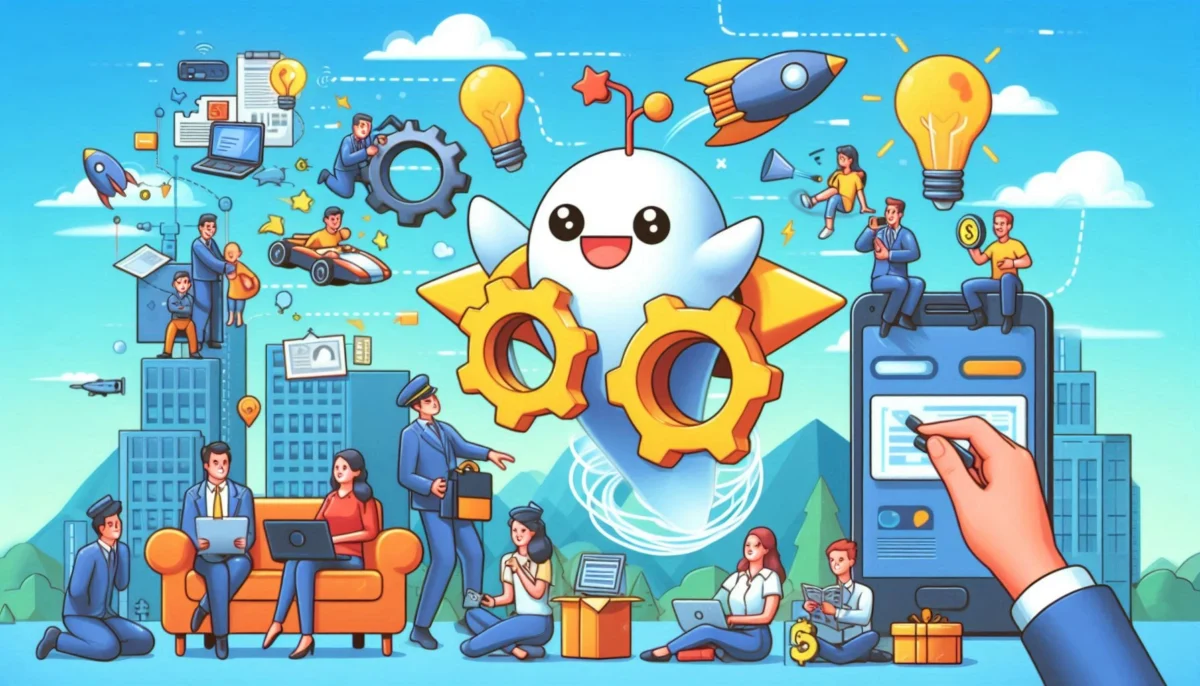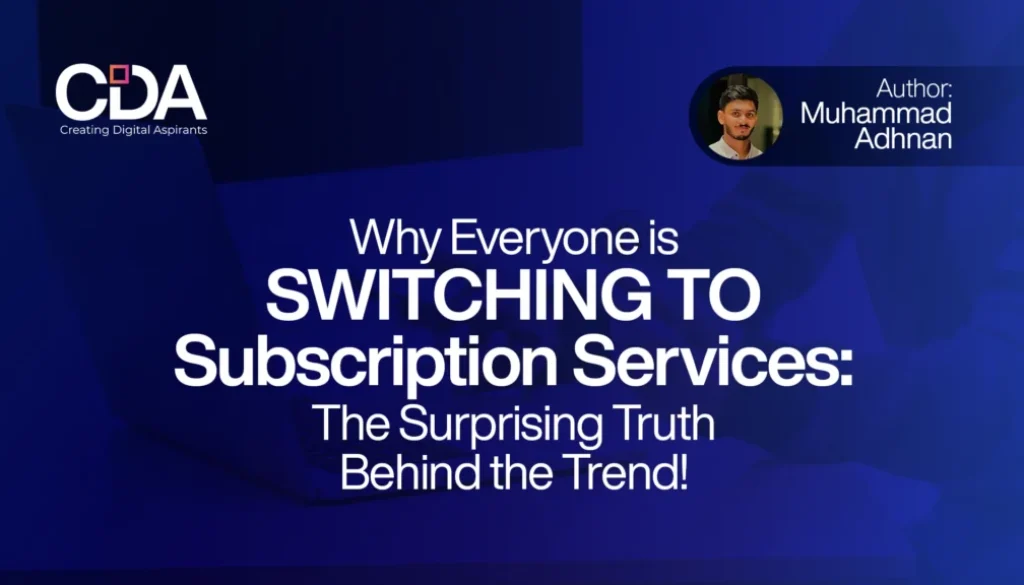Why Everyone Is Switching to Subscription Services: The Surprising Truth Behind the Trend!
Subscription-based models have, in recent years, gained much prominence across various sectors to essentially change the way people interact with products and services. This paradigm has revolutionized not only the conventional outlook of business structures but also provided a new vector for consumer behavior, harnessed in convenience, personalization, and continuity. What once served as a niche offering in media and entertainment has exploded into a comprehensive strategy, yet it now covers everything from streaming services to grocery deliveries and software solutions.
The proliferation of subscription services is neither a fleeting fad nor an industry trend; it is the fundamental shift in how value will be delivered and consumed. In this article, we discuss many contributors to the Subscription Model boom. We examine the benefits and challenges they present both to consumers and businesses alike and offer lessons from which to learn for companies seeking success in this growing competitive landscape. Additionally, we look forward to an effort to predict how the service will continue to evolve while emphasizing innovations that can define the next step of this lively market space.
Table of Contents

Understanding Subscription Models
Definition and Types
A subscription model is primarily a business design where consumers pay for something regularly, which may be monthly, quarterly, or annually. The model has further branched into several different types:
Product Subscriptions
These are about regular shipments of physical goods straight to the consumer. Think of beauty boxes (Birchbox) or meal kits (HelloFresh).
Service subscriptions
This includes subscriptions for digital services, like video streaming services (e.g. Netflix and Hulu) or SaaS models (e.g. Office 365 by Microsoft or Creative Cloud by Adobe).
Content subscriptions
Here, consumers pay for unique content or membership access, such as premium news sites (e.g. The Wall Street Journal) or educational platforms (e.g. Coursera)
Access Subscriptions
This business model provides access to facilities and services, such as fitness gyms (think Planet Fitness) or co-working spaces (think WeWork).
Timeline End
Although the subscription model is implicitly associated with state-of-the-art technology, it has genuine antecedents in other traditional services, such as newspapers and magazines, which have been in existence for several centuries. These older services of subscription have paved the way for the newer trendier distances. The latter half of the 1990s to the early 2000s witnessed a new e-commerce era in which business organizations opened up the opportunity for testing out the subscription models, thus making the approach very inclusive today.
As comfort in spending online improved, businesses began embracing the benefits of fostering continuous relationships through subscription services. Additional capabilities in mobile technology and greater internet accessibility enhanced the popularity of the trend that spread to a multichannel spectrum of subscription services.
Drivers of Subscription Models
Customer Demand for Convenience
Case in point: Amazon Prime
Amazon Prime is, of course, one of the most striking examples of convenient practices. With fast shipping, streaming services, and added discounts all rolled into one service, Amazon has changed consumer’s expectations in doing e-commerce. The site best shows how a perfectly designed subscription service can seamlessly be part of customers’ lives. Thus, shopping, for consumers, becomes an almost hassle-free experience.
Savings Appeal
Case: Meal Kit Services
Companies such as Blue Apron and HelloFresh take advantage of this cost-saving advantage. Meal kit suppliers save customers time by sending pre-measured ingredients and easy-to-follow recipes that cut food waste while adding value in general. Research has shown that frequent meal kit subscription users have lower grocery expenditure than non-subscribers, with much of this savings attributed to impulse purchases and wanton items.
Access to Exclusive Content and Features
Case Study: Disney+
Disney+ launched with a vast library of exclusive content, attracting tens of millions of subscribers eager to relive treasured childhood favorites as well as discover fresh, original content. Leveraging the power of nostalgia and its already powerful brand, Disney was able to become a category leader in the streaming business, an intensely competitive space. The positioning thus represents a critical factor behind unique offerings in subscriber growth.
Personalization and Customization
Case Study: Stitch Fix
Stitches Fix has algorithms that combine them with stylist expertise to service personalized clothing selections. Analysis of what a customer likes and dislikes, normally done through customer reviews, ensures that subscribers receive items that match their tastes, which can foster loyalty and reduce churn. This level of customization will enhance customer satisfaction and differentiate Stitch Fix from any other retail experience.
Psychological Drivers
Case: Fitness Subscriptions
This commitment device is creatively leveraged by services like Peloton and ClassPass. In this way, their engaging content and community of practice encourage users to stay active participants. The social elements, which include challenges with groups and community forums, create a supportive environment that fosters subscriber retention.
Benefits of Subscription Services for Consumers
Simplified Decision-Making
This will be done by providing master-curated selections or automatic deliveries that lift the burden of choice.
For instance, beauty subscription boxes
Beauty subscription boxes, like Ipsy, curate the best choice of beauty products that correspond to each subscriber’s specific personal preference. Subscribers save time and effort in finding the right kind of products they need by making it fun and hassle-free to shop.
Better Customer Experience
Subscription-based services typically have a customer experience focus, providing friendly interfaces, proactive communication, and responsive customer service. A company that can produce an emotional bond with its subscribers is likely to have happy and loyal customers.
More Value Added
Their value proposition is improved as such services usually entitle members to free shipping, special discounts, and early access to new releases. This appeals to people’s sense of belonging, and they are encouraged not to cancel their subscriptions.
Example: Streaming Services
The advantage of streaming services like Netflix and Hulu is that they offer their users an extensive library of content with access to original series and films that no one else has. Such exclusive content increases perceived value and further encourages users to keep on renewing their subscriptions.
Benefits of Subscription Services for Business
Predictable Revenue Streams
Perhaps the most alluring advantage this kind of subscription model presents to businesses is predictability when it comes to revenue. With predictable recurring payments, companies can get a clearer and better sense of their cash flow, thereby making strategic plans and investing for growth.
Example: Software as a Service (SaaS)
Companies in SaaS, such as Salesforce, thrive mainly based on predictable monthly or yearly fees. As such, these companies may invest highly in improving the product besides delivering maximum support to clients to ensure sustainability in the long term.
Customer Retention and Loyalty Subscriptions
Retain customers more than traditional sales do. The relationship that the subscription nurtures is the very reason for loyalty that minimizes calls to constantly acquire customers.
Online Learning Platforms
Online learning platforms like Coursera and MasterClass have a strong community of learners. Useful content delivery together with interactions propel learners back to the platform and minimize churn.
Upselling and cross-selling Selling Opportunities
The subscription model does feature enough scope for upselling and cross-selling. Brands can offer premium tiers or additional products on the platform to the existing subscribers, thus increasing the average revenue per user.
For instance: Streaming Services
Streaming platforms usually possess free tiers with a very limited package of features. As users start using the platform more, most of them opt for premium subscriptions. This way, they leave avenues for revenue growth through additional content unlocked.

Challenges of Subscription-Based Models
Subscription services benefit businesses in numerous ways; however, it also presents challenges.
Customer Churn
Customer churn refers to the cancellation of subscriptions. It is one of the prime issues that several businesses face that rely on subscriptions as their revenue model. High churn rates can wipe off the profits of those businesses and threaten viability in the long term.
Statistics on Churn
According to studies, there is an average churn rate for subscription services in different industries, which falls between 5% and 10% per month. Firms should perform sufficient retargeting techniques to capture subscribers and not lose their subscribers-they may use psychological reasons, tailor their messages to the needs of the subscriber, or other such retargeting techniques.
Managing Customer Expectations
It is not always easy to meet the expectations of customers. Companies must be sure of providing quality goods and services so as not to lose subscribers and hence have to spend more money constantly on quality measures and customer care.
Saturation in Market
Another challenge in the growing number of popular subscription services is market saturation. Brands need to be differentiated and offer something that stands out from the rest so that the brand is noticed amidst competition.
Example: Beauty Boxes
As numerous types of beauty subscription boxes are saturating the market, companies need to innovate regularly and deliver new offerings that catch consumer attention and relevance for their brand.
Best Practices in Subscription Models
Know Your Audience
Before launching a subscription service, you must understand who your target audience is. Do detailed market research on what issues they have with things available, what they like, and how sensitive they are to the idea of pricing.
Example: Surveys and Focus Groups
Surveys and focus groups can be very helpful in understanding the precise information related to consumer expectations that brands can then work toward meeting and associating with offerings.
Start with a Trial Period
Offering a free trial can be a great incentive to sign up, and it will allow possible subscribers to experience the value you are offering risk-free. It removes barriers to entry initially and increases the chances for people to convert to full subscriptions.
Customer Experience
Tailor the experience of the customers by making the sign-up or onboarding process efficient and keeping them in communication. Great service will work significantly in retention, thereby increasing the customer’s loyalty.
Innovation End
Stay ahead of competitors, innovate your products to compete, gather feedback from the subscribers, and accordingly modify services to their preferences and emerging trends of the market.
Example: Iterative Product Development
You can respond swiftly to customer needs by applying iterative product development techniques to maintain an ahead-of-the-game position before your competitors and remain highly relevant for the future as well.
Tracking of Key Metrics
Monitor key performance indicators such as cost of customer acquisition, lifetime value, and churn rates. The information will be at the heart of your strategy, making it easier for you to base your data-driven decisions on improved performance.
The Future of Subscription Models
New Markets
New opportunities abound as chances in all industrial sectors are increasingly noted in various ventures. Therefore, there is tremendous scope for entering new markets, such as healthcare and education, as well as even automotive services. Subscribed solutions have evolved.
Example: Health Subscription
Telemedicine services are now offering subscription services for ongoing healthcare provision. The client can then obtain medical consultations and health care information at any point with a relatively small fee for the month. This will lead to an increase in accessibility and affordability of healthcare services, which can improve access in many communities.
Artificial Intelligence for Greater Personalization
Artificial intelligence will play a pivotal role in setting up the new future for subscription-based services. Since brands are employing artificial intelligence in data analysis, more personalized outcomes await, which in turn will make consumer experiences even more relevant and interesting.
Predictive Analytics Example
With predictive analytics, subscription services can have a view ahead of what customers will need and prefer and, hence, be proactive in making recommendations or even designing tailored offers that will more likely appeal to their preferences. Over time, subscribed services have improved customer satisfaction alongside fostering loyalty and retention.
Sustainability Focus
Consumers are ever turning to and emphasizing concerns on sustainability, and the slightest notion by consumers about subscribed services in terms of such principles-ecologically friendly practices including sustainability sourcing, carbon-neutral shipping, or ethical labor—has the likelihood of being considered appropriate for subscribers who care about the environment.
Subscription Tiers and Customization
More engagements and a wider target audience for the brands will be targeted through customizable subscription tiers and several plans.
For example, Streaming Services. Netflix and Disney+ have adopted tiered subscription models that make access available to consumers according to a level they prefer, either as ad-supported or ad-free. This type of model flexibility helps in fulfilling different needs in consumers and makes them feel more satisfied with the services offered to them.
Social Media Integration and Subscription
Subscription functionality is becoming an adopted function for social media sites as a way of allowing the creators and the brands to monetize their content directly. This approach hastens streamlined engagement with the target audiences, accelerates subscription signups, and allows sustainable revenue streams from the creators while still holding the close relationships they have with their followers.
Conclusion
The above development thus represents a radical shift in consumer behavior and business approach. These consumers’ demands for convenience, cost savings, exclusivity, and personalization explain the popularity of subscriptions across different sectors. This has helped consumers with easier decision-making, a higher quality experience, and added value on the side of the consumers.
The subscription model promises businesses unparalleled opportunities for predictable revenues, customer loyalty, and marketing streams but brings along with it issues such as high churn of customers and market saturation.
The future of the subscription economy will continue to transform with new technological innovation, a change in consumer preferences, and rising demand for sustainability. That is, whether you are a consumer looking for convenience or a business willing to ride the wave, the subscription model is here and there, and the latitude is limitless. Companies that embrace this evolution and adapt to new market dynamics will be well-positioned for long-term success in the subscription economy, opening innovation and meaningful consumer connections in the years ahead.
Author Info
Muhammad Adhnan, a Digital Marketing Specialist in Calicut.
Learner of CDA Digital Marketing Course in Calicut.




